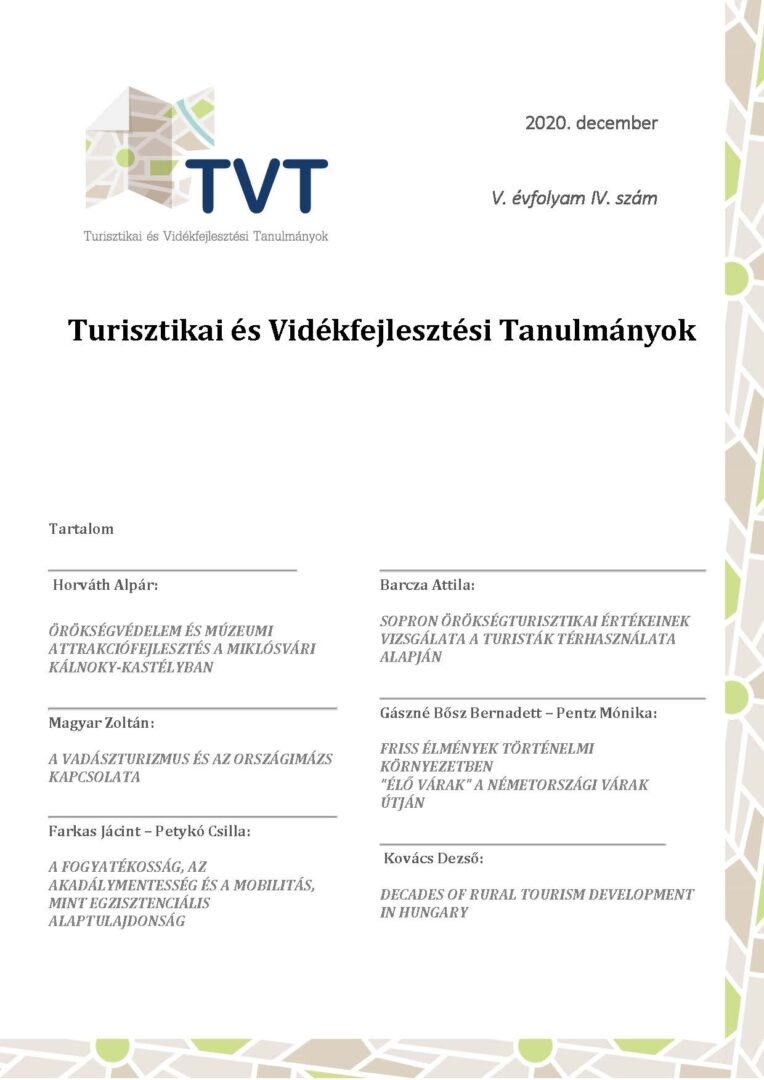SOPRON ÖRÖKSÉGTURISZTIKAI ÉRTÉKEINEK VIZSGÁLATA A TURISTÁK TÉRHASZNÁLATA ALAPJÁN
Kulcsszavak:
Sopron, városi turizmus, örökségturizmus, térhasználat, desztináció menedzsmentAbsztrakt
Sopron turisztikai kínálatát vizsgálva egyértelműen levonható az a következtetés, hogy a város
egyik fontos turisztikai térszíne a belváros. Sopron a hűség városaként vált a városi és
örökségturizmus ismert helyszínévé a magyar lakosság körében, sokan a Tűztoronnyal és a
történelmi belvárossal - annak épületeivel és múzeumaival - azonosítják. Primer kutatás keretein
belül - egy kérdőíves felmérés segítségével - vizsgáltam, hogy a történelmi belváros egyes, híres
örökségturisztikai emlékei mennyire népszerűek a Sopronba érkező vendégek látogatási fókusza
alapján, és hogy alakul a turisták térhasználata a városközponton belül, milyen csomópontok és
főbb térbeli mozgásirányok azonosíthatók. Úgy gondolom, a vizsgálat nemcsak elméleti
szempontból nyújt új ismereteket Sopron turizmusáról, hanem a turisták térbeli mozgásának
ismerete több fejlesztési terület számára fontos lehet. Miként illeszkedhet minél szervesebben a
történelmi belváros a város funkcionális és rendszerszerű működéséhez? Hol keletkeznek
közlekedési szempontból szűk keresztmetszetek? Miként alakul a közterületek használatának
intenzitása? Melyek az optimális helyszínek, csomópontok a látogató- és attrakciómenedzsment
számára az informatív tájékoztató táblák és marketing jellegű reklámfelületek kihelyezésére? A
látogatottsági adatok rávilágíthatnak a népszerű útvonalakra, egyben a hiányosságokra is, amelyek
alapján az eddig háttérbe szorult értékekre nagyobb figyelem irányítható a megfelelő menedzsment
eszközök segítségével.


